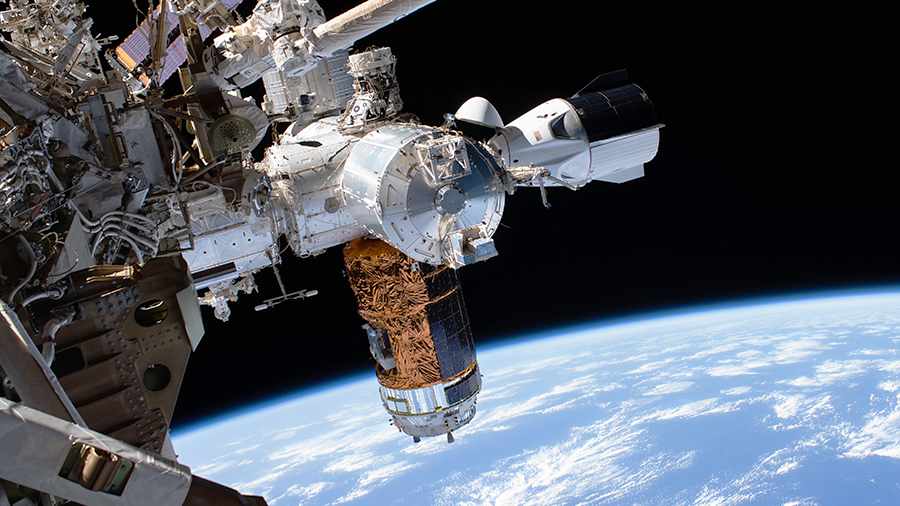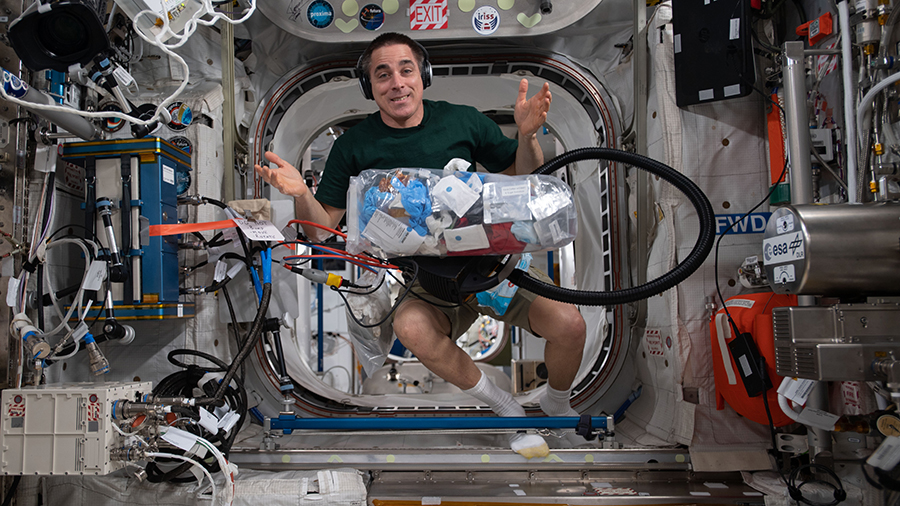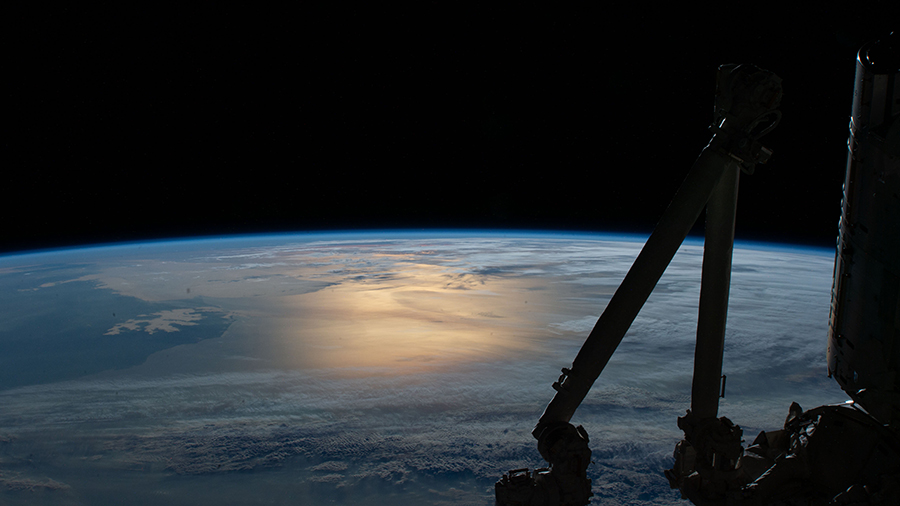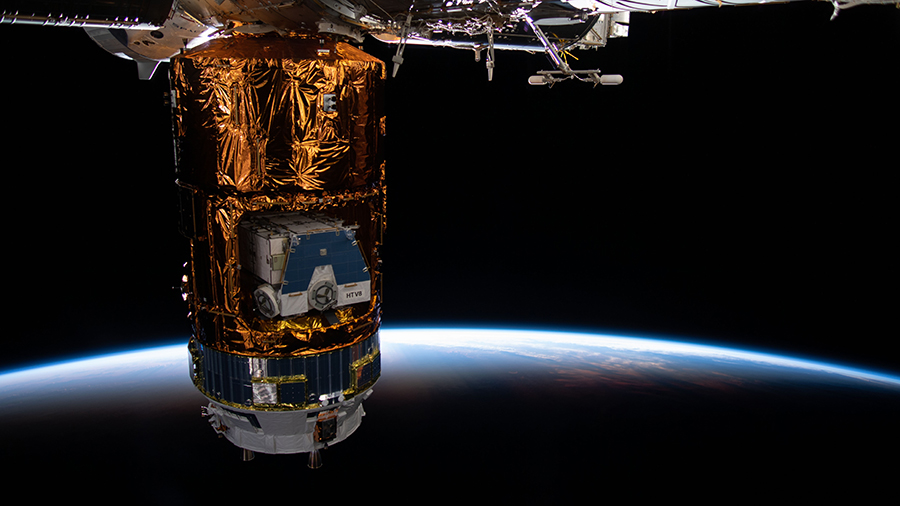International, Commercial Partners Gear Up for Cargo and Crew Missions
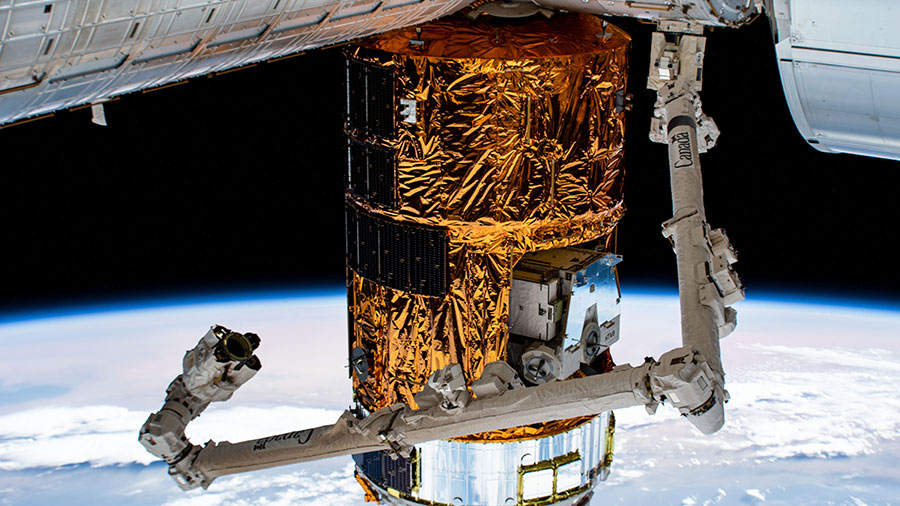
Canada’s robotic arm is poised to remove Japan’s ninth and final H-II Transfer Vehicle (HTV-9) from the International Space Station on Tuesday. Meanwhile, the U.S. and Russia are preparing for the launch of their respective crew ships to the orbiting lab in October.
Commander Chris Cassidy of NASA will be at the robotics workstation on Tuesday and direct the 57.7-foot-long Canadarm2 to release the HTV-9 from its grip at 1:35 p.m. EDT. Roscosmos Flight Engineer Ivan Vagner will back up Cassidy and monitor the release of the HTV-9 as it completes its 85-day cargo mission. NASA TV will cover the activities live starting at 1:15 p.m.
The HTV-9 will spend two more days orbiting Earth before a fiery, atmospheric demise over the South Pacific. JAXA (Japan Aerospace Exploration Agency) is developing an upgraded fleet of HTV-X space station suppliers, replacing the HTV series of spaceships, targeted for their first launch in 2022.
The Expedition 63 and 64 crews are due to trade places at the orbiting lab beginning in mid-October. The Soyuz MS-17 crew ship is slated to blast off from the Baikonur Cosmodrome in Kazakhstan on Oct. 14 and dock to the station’s Rassvet module. NASA astronaut Kate Rubins with Roscosmos cosmonauts Sergey Ryzhikov and Sergey Kud-Sverchkov will then begin a six-month space research mission.
One week later on Oct. 21, Cassidy will wrap up his mission with crewmates Vagner and Russian Flight Engineer Anatoly Ivanishin. The trio will enter the Soyuz MS-16 crew ship, undock from the Poisk module and parachute to a landing in Kazakhstan ending a 195-day expedition in space.
NASA and SpaceX have announced the launch of the SpaceX Crew-1 mission to the station for no earlier than Oct. 23. Mike Hopkins of NASA will command the first operational flight of the Crew Dragon spacecraft piloted by first-time NASA astronaut Victor Glover. They will be joined by Mission Specialists Shannon Walker of NASA and Soichi Noguchi of JAXA, both previous station residents.
Mark Garcia
Powered by WPeMatico



